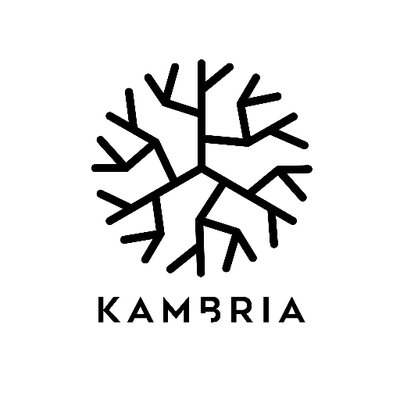Our Rating:
Your Rating:
Quick Summary
267 crypto investors read thisKambria hopes to create a blockchain-powered ecosystem that fosters collaboration among innovators, companies, and manufacturers in the robotics industry.
Pros
Cons
Want to know more about current and upcoming ICO projects? Visit our initial coin offerings page and subscribe to the Bitcoin Market Journal newsletter today!
Raised Amount Unreported: contact us to update this information

Investment Information:
- How to invest: For information about how to participate in the Kambria token sale, visit the following link.
- Eligibility: Investors from the US are restricted.
- Payment Accepted: ETH

Market: 4
- Kambria believes that it can solve problems in the current robotics industry related to isolated development, wasted labor, and high startup costs.
- The project hopes to bring value to the market by using game theory and token economics to motivate a community of investors, companies, manufacturers, and users to collaborate and catalyze ecosystem growth.
- In April 2017, Grand View Research reported that the industrial robotics market size is expected to grow past $40 billion by 2020.

Competitive Advantage: 3.5
- Kambria’s platform consists of five pillars: the code base, the innovation marketplace, the manufacturing alliance, value capture, and legal enforcement.
- The code base, or Kambria DNA, is a module management system used to specify all of the necessary components of a robot.
- The innovation marketplace will be used to provide KAT as a reward for valuable work within the platform.
- The value capture utility within the platform intends to assure community members that they will be compensated for the value that is captured when a robot is manufactured, sold, or performs a valuable task for which people are willing to pay.
- The manufacturing alliance aims to reduce the need for supply chain by sharing knowledge with manufacturers in hopes of turning Kambria DNA into robots efficiently.

Team: 4
- Kambria’s team members have strong experience with robotics and blockchain technology. Co-Founder Jared Go is a roboticist and a founder at a networks startup. He also has experience with AI, VR, real-time graphics, and mechanical and electrical engineering.
- The project’s team members also have solid entrepreneurial experience. Co-founder Dr. Thuc Vu is a seasoned entrepreneur with a number of company acquisitions, the most recent one by Google. Additionally, he has extensive knowledge of game-theory, tournament design, and multi-agent systems.
- Kambria’s advisors have experience working with blockchain companies. The project’s team of advisors includes the founders of Hashed, KyberNetwork, Tomochain, WeTrust, and NEO Global Capital.
- Thuc Vu (LinkedIn)
- Jared Go (LinkedIn)
- Tingxi Tan (LinkedIn)
- Manuela Veloso (LinkedIn)
- Dhana Pawar (LinkedIn)
- Jill Nguyen (LinkedIn)
Team Members

Token Mechanics: 3.5
- The project’s available MVP illustrates how the project’s voting system will operate and shows different platform features like the codebase and store.
- The KAT token is used to facilitate activity on the platform. The token will be used to issue bounty challenges, reward platform users for contributing designs for code, reward manufacturers for production, promote projects, and fundraise for shared technology.
- Kambria Karma will also be used on the platform to incentivize concrete contributions and useful work by tracking the amount of real work performed. Kambria Karma is a non-tradeable ledger entry for wallet addresses.
- Kambria plans to implement a token holder perks program that will provide discounted access to makerspaces, co-working spaces, parts, tools, or supplies.
- Token Supply: 5,000,000,000 KAT

User Adoption: 3
- The project is straightforward and easy to understand, which may help facilitate user adoption among innovators, companies, and manufacturers in the robotics field.
- Kambria has a solid list of partners including Stanford University, Carnegie Mellon University, and Genesis Healthcare System.
- Kambria has put forth a decent effort marketing the project and generating buzz. The project has about 12,000 followers on Twitter, about 1,000 followers on Facebook, and over 10,000 members in its Telegram group. However, there does not seem to be much engagement on its social media accounts.


